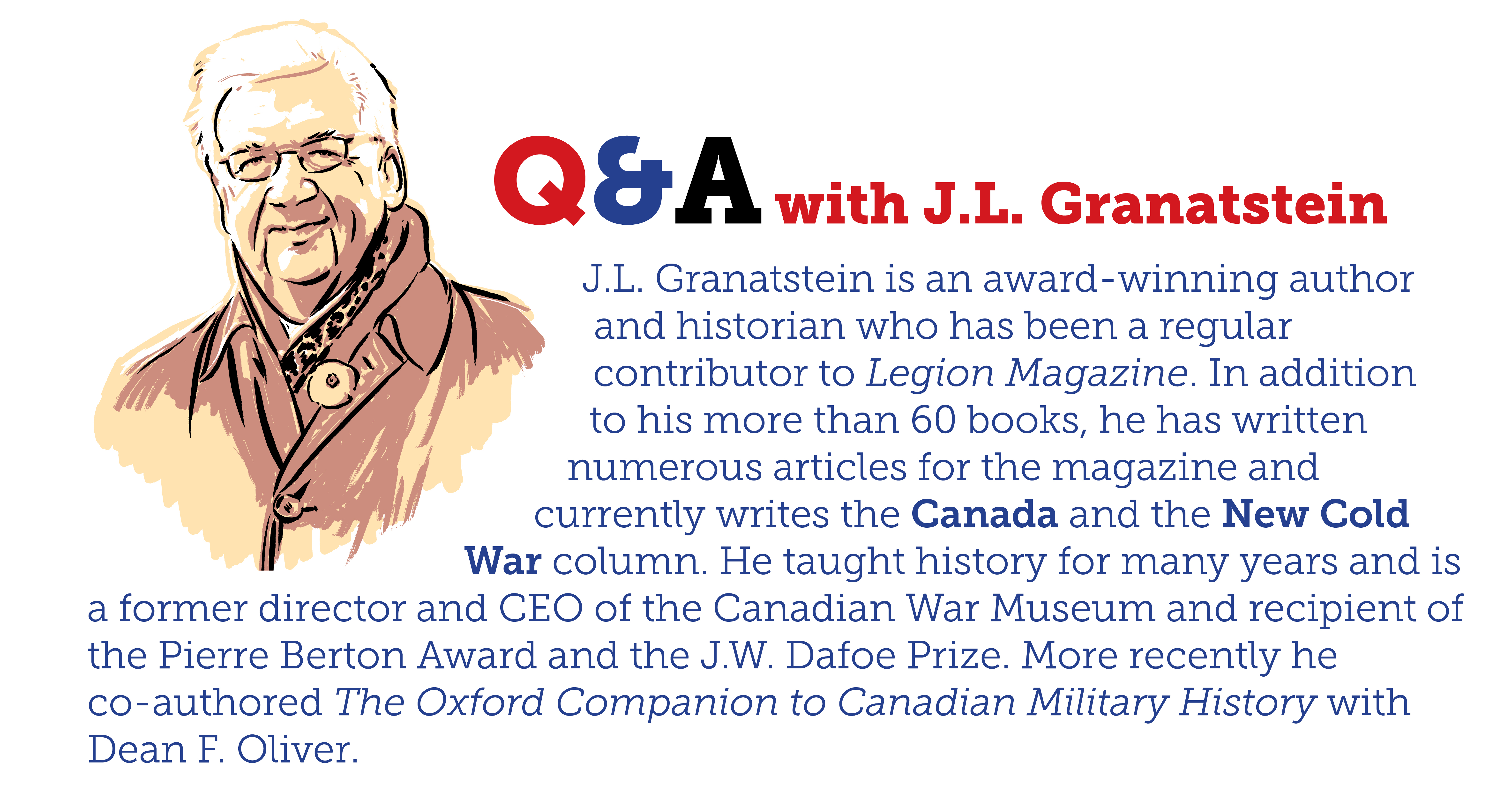

Q: What made you want to study military history in the first place?
A: It wasn’t my first choice. At Royal Military College of Canada, I wanted to study political science and economics, but found that economics was beyond me. (The story of my life, I fear.) So, I went into history and because I was in the army, I wrote a thesis on peacekeeping. Then I was posted to the Directorate of History at National Defence headquarters, wrote a doctoral dissertation on the Second World War, and later worked on foreign and defence policy as a professor. By the late 1980s, military history was my major focus, and since then I have since much on the world wars.
Q: What’s it like to have a career as a military historian?
A: It’s a good career—if you can find a job! There are only a few Canadian universities that do not hate the subject, but there is the Department of National Defence headquarters and the War Museum, where I had the good fortune to be the director and CEO 20 years ago. The truth is, the universities notwithstanding, there is real public interest in Canada’s military story, and if military historians can find a job and publisher, they can make a career—and a living.
Q: Why did you choose to focus so much of your work on Canada’s role in the world wars?
A: Canada’s military history is concentrated—not wholly but largely—in the world wars. This is when huge numbers served, fought and re-integrated into society. Great stories, with many remaining to be told, and it seemed natural to devote most of my research and writing here. While I have written about the battlefields, my main interest really has been on the domestic politics of war and the politics of high command.
Q: Do you think the Hundred Days campaign was the Canadian military’s most important sequence of First World War battles?
A: I don’t think there’s any doubt that the Hundred Days were the most important battles Canadians ever fought. They broke the back of the German army in a series of brilliant, hard-fought actions, so much so that the November 11, 1918, armistice was really a German surrender. But the cost was very high, 20 percent of total Canadian casualties in just over three months of fighting. Sadly, the Battle of Vimy Ridge so dominates the public realm that the Hundred Days are almost unknown.
Q: Do you think Canada’s postwar Permanent Force should have been so reduced in numbers?
A: Canadians (like others) don’t learn from history. After 1918, despite the best efforts of General Sir Arthur Currie and others, the plans for a good sized permanent force and a well-trained militia were rejected by government. We paid the price for this in 1939 and after, when Canadians again had to learn how to operate on the battlefield from scratch. The result was heavy casualties, and Canada amazingly reduced the regular force numbers again after 1945 and once more at the end of the Cold War in 1991.
Sadly, we never learn, or so it seems. We all pay for insurance on our houses and most of us never have fire or floods. But somehow Canada’s governments don’t see the regular and reserve military as an insurance policy against the possible human costs of future war.
Advertisement
No related posts.














